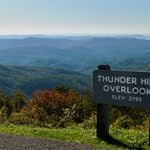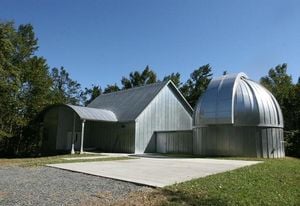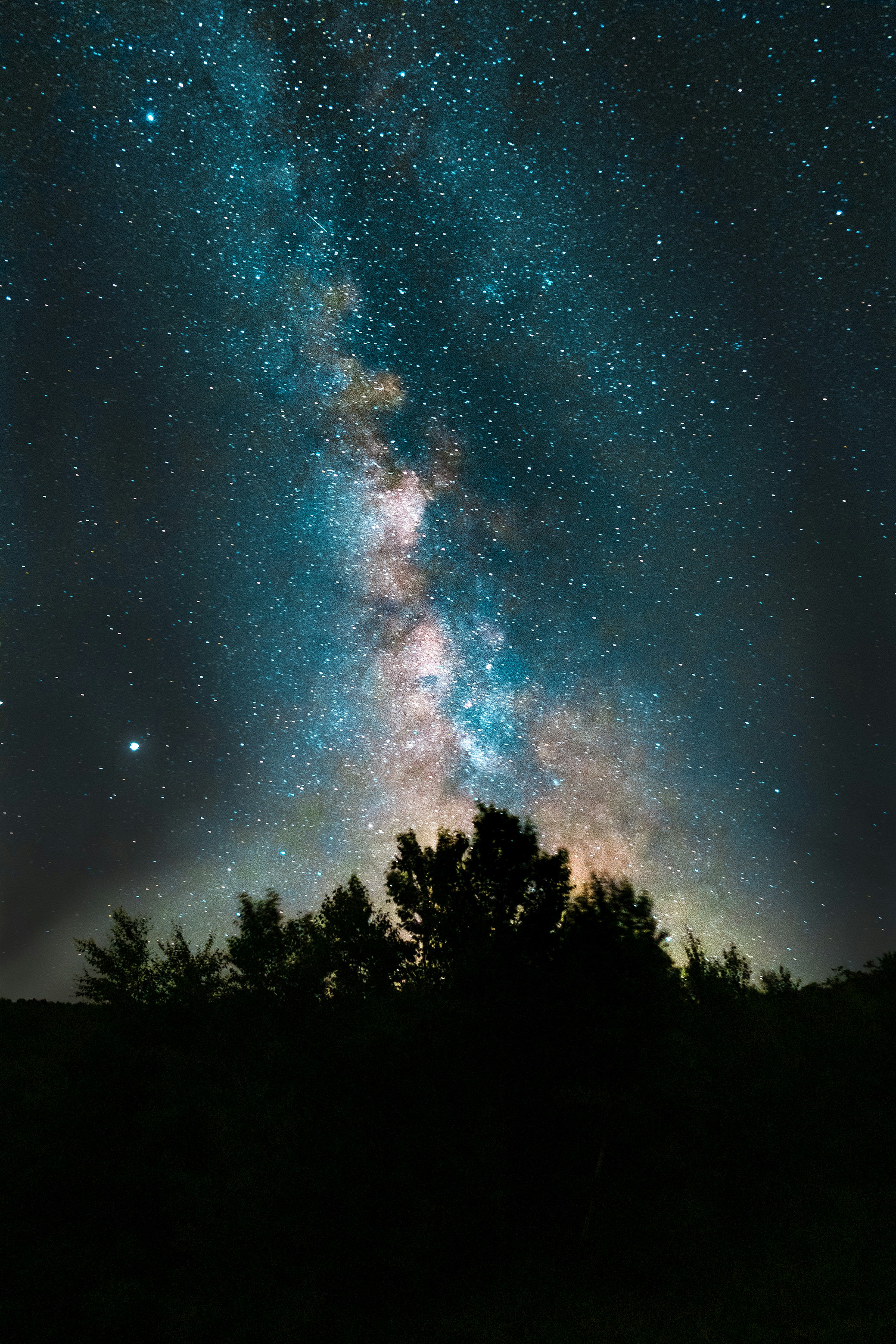North Carolina’s High Country is a region of breathtaking beauty, where rugged mountain peaks, lush forests, and crystal-clear streams converge to create an outdoor enthusiast’s paradise. But beyond its stunning landscapes, the High Country also offers some of the best stargazing opportunities on the East Coast. Away from the hustle and bustle of city life, the night skies in this region are dark and clear, providing the perfect canvas for observing the wonders of the cosmos. Join us as we take a journey through North Carolina’s High Country and explore some of the top stargazing spots that will leave you mesmerized by the brilliance of the stars above.
Grandfather Mountain:

Standing tall at over 5,000 feet, Grandfather Mountain is one of the most iconic landmarks in North Carolina’s High Country. Not only does it offer stunning panoramic viewsof the surrounding landscape, but it’s also an excellent spot for stargazing. The Mile High Swinging Bridge provides an ideal vantage point for observing the night sky, with minimal light pollution to obstruct your view. Whether you visit during a meteor shower or on a clear, moonless night, Grandfather Mountain promises an unforgettable stargazing experience.
Blue Ridge Parkway:

Stretching for 469 miles through the Appalachian Mountains, the Blue Ridge Parkway is renowned for its scenic beauty and diverse ecosystems. But it’s also a fantastic destination for stargazing. Numerous overlooks along the parkway provide unobstructed night sky views, making it easy to pull over and set up a telescope or lie back and marvel at the stars. The parkway’s high elevation and remote location ensure dark skies, allowing visitors to see thousands of stars, distant galaxies, and nebulae.
Mount Mitchell State Park:

As the highest peak east of the Mississippi River, Mount Mitchell offers unparalleled night sky views from its summit. The park is designated as an International Dark SkyPark, meaning it’s free from the light pollution that plagues many urban areas. Visitors can drive or hike to the summit, where they’ll find an observation platform and interpretive exhibits about the night sky. On clear nights, the Milky Way shines brightly overhead while shooting stars streak across the darkness, creating a truly magical atmosphere.
Linville Gorge Wilderness:
 Known as the “Grand Canyon of the East,” Linville Gorge is a rugged and remote wilderness area that offers some of the darkest skies in North Carolina. Camping is permitted throughout the gorge, providing ample opportunities for stargazing away from the distractions of civilization. Whether camping along the rim of the gorge or hiking to one of the many overlooks, you’ll be treated to stunning views of the night sky, with the silhouette of the gorge serving as a dramatic backdrop.
Known as the “Grand Canyon of the East,” Linville Gorge is a rugged and remote wilderness area that offers some of the darkest skies in North Carolina. Camping is permitted throughout the gorge, providing ample opportunities for stargazing away from the distractions of civilization. Whether camping along the rim of the gorge or hiking to one of the many overlooks, you’ll be treated to stunning views of the night sky, with the silhouette of the gorge serving as a dramatic backdrop.
Dark Sky Observatory:
The Appalachian State University Dark Sky Observatory is a significant resource for education and astronomy research. Its location, equipment, and commitment to dark sky preservation make it an ideal spot for both amateur stargazers and professional astronomers. Whether you’re a student looking to deepen your knowledge or a public member eager to explore the stars, the DSO provides a valuable gateway to the wonders of the night sky.

- Public Outreach: The observatory hosts public viewing nights and educational programs to foster interest in astronomy within the community. These events often include guided tours of the facility, presentations, and the chance to observe celestial objects through the telescopes.
- Community Engagement: Through its outreach programs, the DSO educates the public about the impacts of light pollution and the benefits of dark sky preservation.
- Reservations: Public observing sessions are often scheduled and may require reservations. These sessions provide a guided experience with knowledgeable staff and access to the observatory’s powerful telescopes.
- Events: The DSO frequently hosts special events aligned with significant astronomical occurrences, such as meteor showers, planetary transits, and eclipses, offering unique viewing opportunities.
Tips to Prepare for an Unforgettable Night Under the Stars
Stargazing is a captivating hobby that allows you to explore the wonders of the night sky, offering a peaceful and awe-inspiring experience. Whether you’re a seasoned astronomer or a beginner, preparation is key to making the most out of your stargazing adventure. Here are some essential tips to ensure a successful night under the stars.
1. Choose the Right Location
- Dark Sky Sites: Seek locations far from city lights to avoid light pollution, which can obscure your view of the stars. National parks, rural areas, and designated dark sky reserves are ideal.
- High Altitude: Higher elevations often provide clearer skies and less atmospheric interference.
- Local Astronomy Clubs: Check with local astronomy clubs for recommendations on the best stargazing spots in your area.
2. Check the Weather
- Clear Skies: Cloudy or rainy weather can ruin a stargazing session, so ensure the forecast predicts clear skies.
- Stability: Calm nights with minimal wind offer better viewing conditions, as turbulence can affect the clarity of the stars.
3. Know What to Look For
- Star Charts and Apps: Use star charts or astronomy apps like Star Walk or SkyView to identify constellations, planets, and other celestial objects.
- Astronomy Events: Track celestial events like meteor showers, lunar eclipses, and planetary alignments to plan your sessions accordingly.
4. Equip Yourself Properly
- Binoculars or Telescope: While binoculars are great for beginners, a telescope provides a more detailed view of celestial objects.
- Red Flashlight: Use a red flashlight to preserve your night vision while reading charts or adjusting your equipment.
- Warm Clothing: Even in summer, temperatures can drop significantly at night. Dress in layers and bring blankets or sleeping bags for added warmth.
- Comfortable Seating: A reclining chair or a mat will make long stargazing sessions more comfortable.
5. Plan Your Timing
- Moon Phases: A full moon can be too bright and obscure the stars. Plan your stargazing sessions around new moons or when the moon is in a crescent phase.
- Seasonal Changes: Different constellations are visible at different times of the year. Research what celestial objects are prominent during your stargazing session.
6. Practice Good Stargazing Etiquette
- Quiet Environment: Keep noise to a minimum to fully enjoy the tranquility of the night.
- Respect Nature: Leave no trace and ensure you don’t disturb wildlife or the natural environment.
- Share the Experience: If stargazing in a group, be mindful of others’ enjoyment and share the equipment respectfully.
7. Capture the Moment
- Astrophotography: If you’re interested in capturing the beauty of the night sky, start with a DSLR camera, a tripod, and a remote shutter release. Use long exposure settings to capture more light.
- Smartphone Tips: Even with a smartphone, you can get decent shots of the moon and brighter stars or planets. Use a phone mount for stability and apps designed for night photography.
8. Stay Safe
- Let Someone Know: If you’re heading to a remote area, inform a friend or family member of your plans and location.
- Emergency Supplies: Bring a first aid kit, plenty of water, snacks, and a fully charged phone for emergencies.
- Wildlife Awareness: Be aware of local wildlife and take precautions, especially in areas where larger animals are common.
Conclusion
Stargazing is a magical way to connect with the universe and find peace and wonder. You can enjoy the night sky in all its glory with the right preparation and patience. Happy stargazing!


